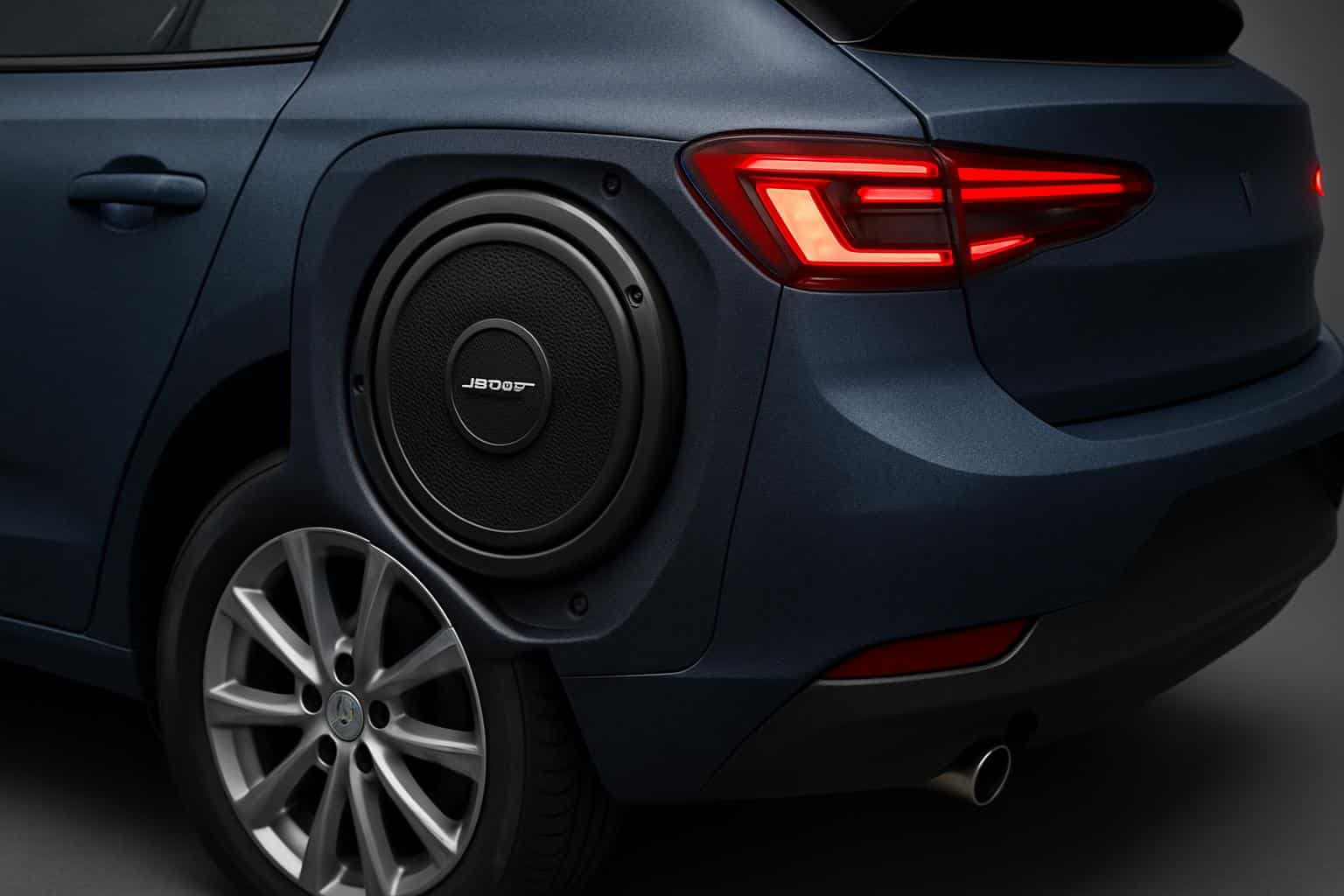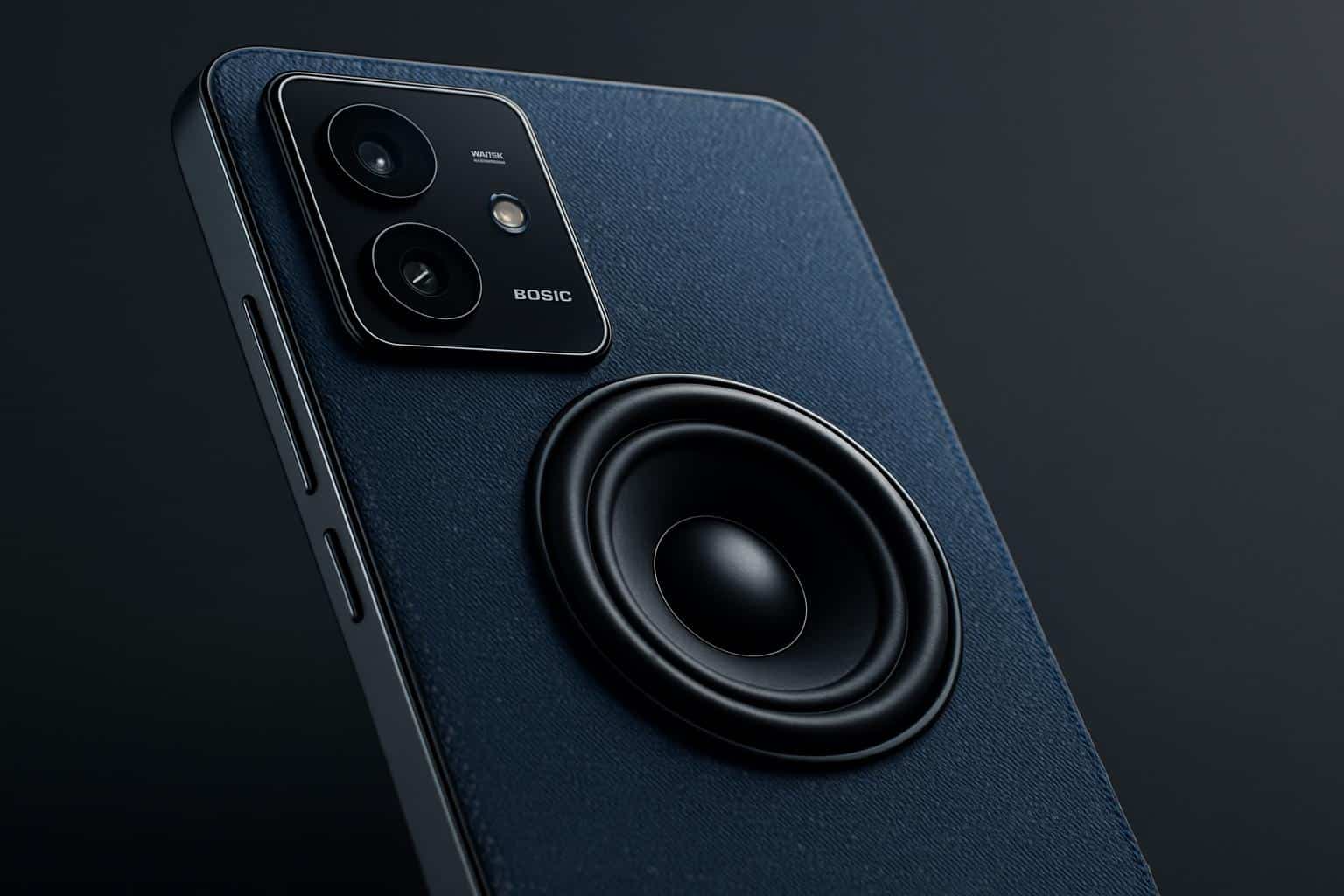The next flagship from Redmi, meanwhile, is creating a bit of noise of its own — and we mean that literally, as the denim-like rear houses a rare trick in phone audio: an untethered rear woofer.
Company teasers on the smartphone’s Weibo page confirm a 2.1 speaker array, which is co-tuned with Sound by Bose and is supposed to provide fuller bass and cleaner vocals than a regular dual-speaker layout.

It’s a risky move in a category where design and sound often seem secondary. If done well, this could be the most interesting mainstream phone audio system we’ve seen since manufacturers began chasing larger chambers and “super-linear” drivers.
A Smartphone With A 2.1 Soundstage Explained
Most flagships use at least two drivers: one that’s bottom-firing and another that acts as a tweeter through the earpiece, and they lean on digital processing to fake low-end kick. Redmi’s solution is to introduce a dedicated low-frequency driver on the rear side of the speaker, achieving a proper 2.1 topology: two full-range speakers and an independent woofer.
The distinction matters. Phones with passive radiators, like the ones on the Cypher and Phonon, also increase perceived bass as they resonate the air cavity without employing any active drivers. An active woofer can extend response down to approach the sub-100Hz range, if correctly ported and powered. In lab measurements on average smartphones, publications like GSMArena have frequently demonstrated energy collapsing below about 150Hz; an additional driver can move that floor in a way that matters.
There are trade-offs, and a rear-firing woofer requires some sophisticated acoustic engineering to avoid being muffled on soft surfaces and to manage cabinet vibrations. That “Boombox” on LG’s G7 used to work with table coupling for more volume, but it called for some odd placement. You can expect Redmi to employ internal bracing and tuned vents to mitigate this, while software will keep phase alignment tight between the three drivers.
Bose Tuning And The Bass That Never Quite Was
Bose’s name on the tuning also nods to psychoacoustics — the relationship between loudness and warmth, for example, that our ears perceive at different volumes. Companies like Harman have published listener preference curves for speakers and headphones, and while Bose has its own playbook, the goal is the same: provide grooving bass without soiling mids or sibilant highs.
On phones, that usually involves dynamic EQ that adds some lows at lower volumes (where human sensitivity to bass dives) and dials it back again as you turn up the sound to avoid distortion. And with a dedicated woofer doing the heavy lifting, so to speak, the two full-range drivers can concentrate on clarity and imaging. If Redmi marries this with Dolby Atmos–style spatial processing — fairly standard in this tier — you’re looking at a wider, more stable stereo field for games and streaming.

Denim Back With An Acoustic Twist For The Woofer
The denim-like back is more than a style flex. Choices can influence color (literally), grip, and heat dissipation, as well as, in this instance, acoustics. The so-called textile-laminate back can also serve as a breathing grille for the woofer port, further diminishing resonances that a glass panel could otherwise spread. You might imagine it as a fluffy baffle that quells high-frequency artifacts while allowing low-frequency air to move.
Phones have flirted with fabric before — I’m thinking Motorola’s ballistic nylon on the Droid line or various vegan leather finishes, for instance — but a denim-like texture married to an active rear driver is new. The design challenge is to build those qualities into a durable system: good abrasion resistance and stain protection; consistent acoustic transparency. A coated weave or polymer-backed fabric will likely strike the right feel-versus-durability balance.
The Hardware Context And What To Watch Closely
The company is pitching this phone on the flagship tier with next-gen Qualcomm silicon, but the top-line feature here has to be audio. Keep an eye out for the support gubbins that come as part of the package: Bluetooth LE Audio with LC3, which will allow lower-latency streams; optional aptX iterations for improved quality once you get your hands on some compatible ’buds; and system-level tweaks such as auto tonal-balance correction.
The rear woofer might require some careful power control. Bass reproduction is energy intensive; smart amplifiers that can detect load and temperature can prevent throttling as well as protect the battery. Thermal design is just as important so those bass hits don’t give you chassis buzz or hot spots while in the groove for extended periods of time.
What The Results Mean For Everyday Phone Audio
Objective metrics will matter here. Seek third-party curves which display extended bass with a measure of harmonic distortion control — DXOMARK’s audio tests and independent lab SPL measurements serve as solid reference points. Real listening should bring tighter kick drums, less clipping at max volume, and vocals that stay centered and clean as the woofer searches deeper.
If the denim-wrapped audiophile flagship from Redmi delivers on its claim of a genuine 2.1 system tuned by Bose, then it could drive the industry toward bolder mobile acoustic solutions. In a world of spec-sheet sameness, being able to actually hear the difference is a welcome change.

